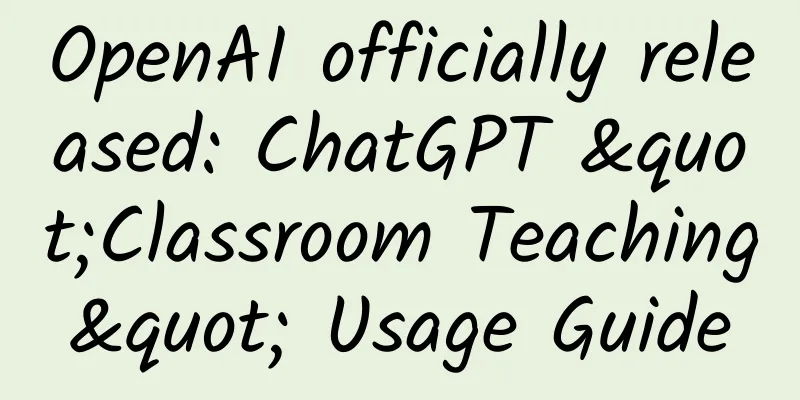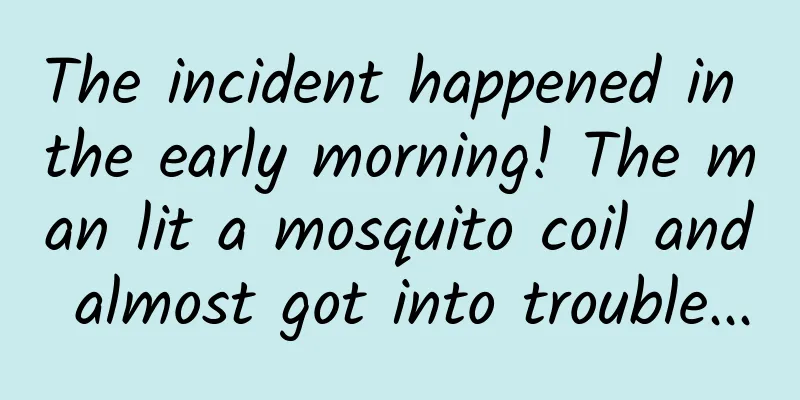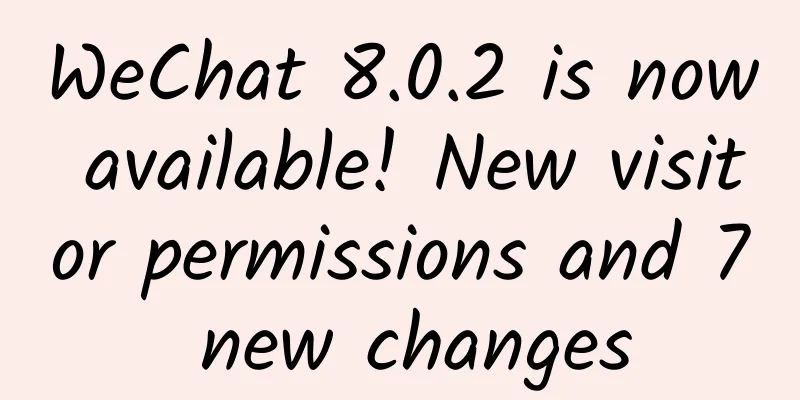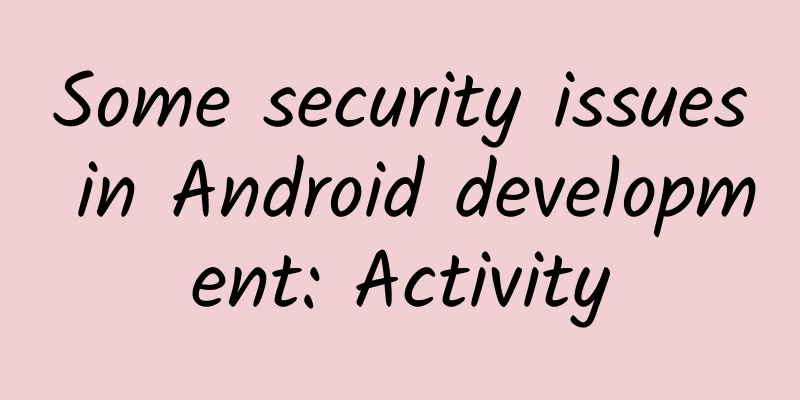OpenAI officially released: ChatGPT "Classroom Teaching" Usage Guide

|
In February this year, the University of Hong Kong issued a notice to all teachers and students, prohibiting the use of ChatGPT or other AI tools in all classes, assignments and assessments at the University of Hong Kong, otherwise it will be regarded as "plagiarism." However, just six months later, the University of Hong Kong announced that it would fully urge teachers and students to accept generative AI. Today, the University of Hong Kong has provided various generative AI tools to teachers and students for free, including Microsoft's Azure and OpenAI's ChatGPT and DALL-E. This change in attitude is due to people’s gradual realization that generative AI can bring us enough convenience and benefits, not just the problems of unfair competition and academic misconduct reported by some media. Of course, it is also very important to know how to maximize their value. Especially for college educators, how should they make full use of AI tools such as ChatGPT and bring them into the classroom? Today, OpenAI introduced some specific cases in an official blog. These include: 1. Role-play challenging conversations Professor Helen Crompton of Old Dominion University in the United States encourages her graduate students to use ChatGPT to play specific roles, such as a debate partner who can point out weaknesses in their arguments; a recruiter who interviews them for a job; or a new boss who provides feedback in a specific way. She said that exploring information in a conversational environment can help students understand the learning material in a more detailed and new perspective. 2. Create quizzes, exams, and lesson plans from course materials Professor Fran Bellas of the University of A Coruña in Spain recommends that teachers use ChatGPT when writing class quizzes, exams, and lesson plans. He suggests sharing course materials with ChatGPT first, then asking for fresh quiz and lesson plan ideas that use modern or culturally relevant examples. He also uses ChatGPT to help teachers make sure the questions they write take into account the different levels of their students. “If you go to ChatGPT and ask it to create a five-question exam about circuits, the responses you get are very original. You can take those ideas and adapt them.” 3. Reduce barriers for non-native English speakers Most of Anthony Kaziboni, head of research at the University of Johannesburg, doesn’t speak English outside of class. He believes that mastering English is a huge advantage in academia, and that even small misunderstandings of the finer details of English grammar can hinder students from gaining recognition and opportunities. He encourages students to use ChatGPT to get help with translations, improve their English writing, and practice conversations. 4. Cultivate students' critical thinking Geetha Venugopal, a high school computer science teacher at the American International School in Chennai, India, likens teaching students how to use AI tools to teaching them how to use the internet responsibly. In her class, she advises students to remember that answers given by ChatGPT are not always credible and accurate, and that they need to think about whether they should believe them, and then confirm the authenticity of the information through other primary resources. The goal is to help them "understand the importance of continuously developing original critical thinking, problem solving, and creativity skills." In addition, OpenAI also mentioned some tips for educators to get started when using ChatGPT in the blog, covering four aspects : "Developing teaching plans", "Creating effective explanations, examples, and analogies", "Helping students learn through teaching", and "Creating AI tutors". (Just copy and paste the prompts into ChatGPT to test it.) For example, when educators want AI to help them develop a detailed teaching plan, they can enter a prompt like this: You are a friendly, helpful teaching instructor who is helping teachers prepare for their lessons. First you need to introduce yourself and ask what subject the teacher wants to teach and what grade level the students are. Wait for them to respond. Do not proceed until you receive a response. Then, ask the teacher if the student already has knowledge of the topic or if this is a completely new topic. If the student already has knowledge of the topic, ask the teacher to briefly explain how much they think the student knows about the topic. Wait for the teacher to respond. Do not respond for the teacher. Afterwards, ask the teacher what the learning objectives for the lesson are; that is, what they want students to understand or be able to do after the lesson. Wait for a response. Based on all this information, come up with a customized lesson plan that includes a variety of teaching techniques and approaches, including direct instruction, checking for understanding (including gathering evidence of understanding from a wide range of students), discussions, engaging in-class activities, and homework. Explain why you chose each approach in particular. Ask the instructor if they would like to make any changes or if they are aware of any misconceptions about the topic that students may have. Wait for a response. If the teacher wants to change something, or if they have any misunderstandings, work with the teacher to change the curriculum and clear up the misunderstandings. Finally, to ensure that you are meeting your learning goals, ask your teacher if they need any advice. Wait for a response. If the teacher is happy with the lesson, tell them they can come back to this prompt and contact you again to let you know how the lesson went. For more prompt examples, see: https://openai.com/blog/teaching-with-ai Like the internet, ChatGPT is a powerful tool that, when used correctly, can empower educators and students. There are many ways to achieve this, and the field of education is an important answer. To this end, OpenAI also provides some resources , including links to introductory materials from leading educational organizations, methods for using AI for teaching, and detailed answers to common questions educators have about how to effectively use ChatGPT for education. In April this year, Hong Yang, a professor of environmental science at the University of Reading, also wrote an article in Nature , detailing how he actively embraced generative AI such as ChatGPT and integrated it into his daily teaching work, and gave some suggestions on how to use ChatGPT effectively in the classroom: 1. Spend some time learning and practicing typing prompts in ChatGPT; 2. Diversify your (teaching) assessments, such as adding oral presentations, to avoid plagiarism; 3. Aware of the risk that ChatGPT could exacerbate inequality; 4. Identify clear goals: Have a clear idea of what you want to achieve through ChatGPT; 5. Test and refine the prompt: Test the prompt with ChatGPT and refine the prompt based on the results. Repeat this process until you achieve the desired results. 6. Edit with others: Collaborate with other instructors and your students to review and refine the prompts. In his opinion, it is necessary to teach students how to use generative AI tools such as ChatGPT. “My students will graduate soon and start working, and their employers may ask them to work with AI models, and if they don’t know how to use these tools properly, it could hinder their development. We can’t stop students from using calculators or the internet, and we can’t stop them from using ChatGPT. The best thing to do is to understand the tool and try to incorporate it into your teaching.” What do you think about this? Reference Links: Author: Hazel Yan Editor: Paige |
<<: What is quantum artificial intelligence? (Part 2)
Recommend
How can space probes see more clearly?
At present, Tianwen-1 is about 184 million kilome...
People who have heartburn after eating may be silently at risk of developing esophageal cancer...
Many people have had this experience in life: the...
An article to understand the product logic and strategic layout behind the Alipay 9.0 revision
[[140494]] About the Alipay 9.0 revision: If you ...
How to analyze and evaluate the value of KOL investment?
Social network analysis (SNA) is a methodological...
What did McDonald's packaging look like 30 years ago? The Bird's Nest remembers
Biologists discovered an unusual bird's nest ...
How to evaluate the feed flow effect of Xiaohongshu?
Maybe many of you have no relevant experience lik...
A little-known virus spreads in South America: What is Oropouche fever?
Produced by: Science Popularization China Author:...
Setting up and placing advertising accounts in Moments
We have shared content on the characteristics of ...
NetEase Cloud Music Competitive Product Analysis Report
When it comes to music software, many people thin...
The difference between opening a regular account and a rebate account for Baidu bidding promotion
Formal account: The domain name registration and ...
Electric Technology Car News: Reduce displacement without worrying about power. What is the magic of the new Sagitar?
Want to save fuel? Reducing displacement is the s...
B-side operations: How to achieve refined operations through a customer grading system?
The determination of the buyer-seller relationshi...
The ups and downs of Chinese advertising companies over the past 40 years
*Commercial advertising was once accused of being...
The World Cup has changed: people are more enthusiastic about buying lottery tickets than watching the games
When the World Cup group stage was not over yet, t...
How does the e-commerce industry master social media marketing such as Weibo and Tik Tok?
Judging from various indications, social e-commer...









